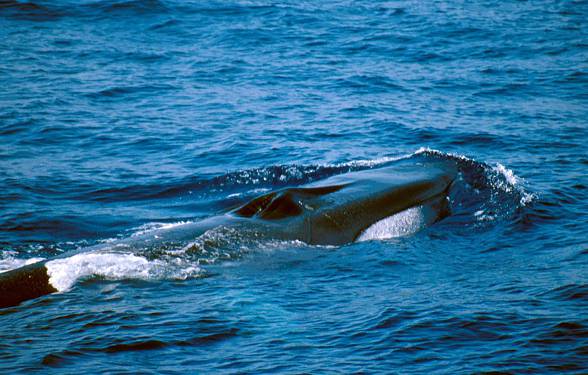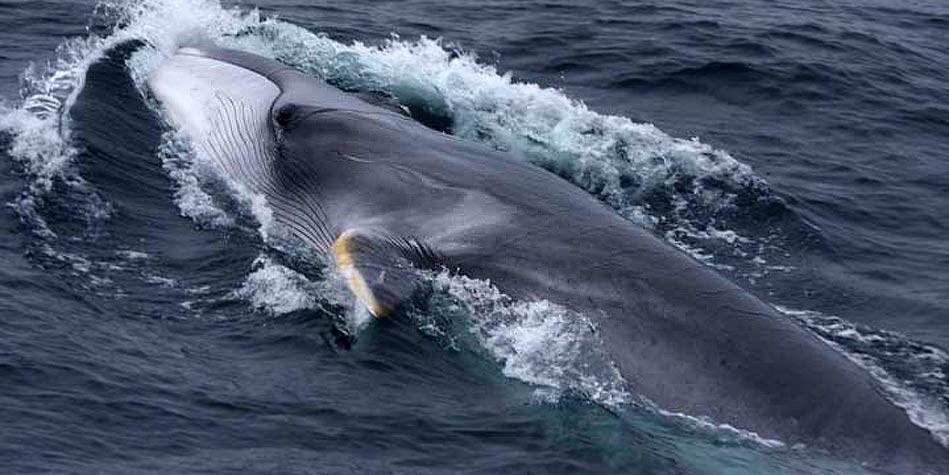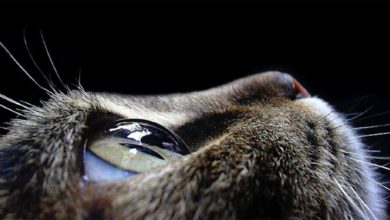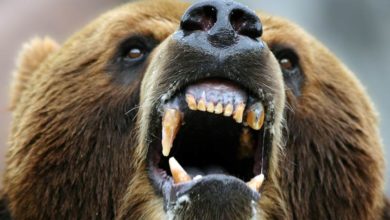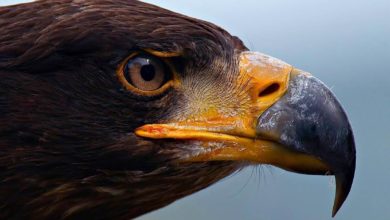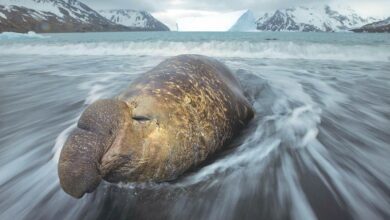Fin whale (Balenoptera physalus) – the greyhound of the sea
Fin whale, or alternatively: finback whale, common rorqual, razorback, is one of the largest animals on the planet. Only the blue whale surpasses it in terms of size – see: The largest whales. Still it is a very calm and benign species, mainly a plankton-eater, avoiding swimming in shallow coastal waters. It also avoids human contact. It is by human hand the fin whales have become an endangered species.
Classification
- Class: Mammalia
- Subclass: Eutheria
- Order: Cetartiodactyla
- Family: Balaenopteridae
- Genus: Balaenoptera
- Species: Balaenoptera physalus
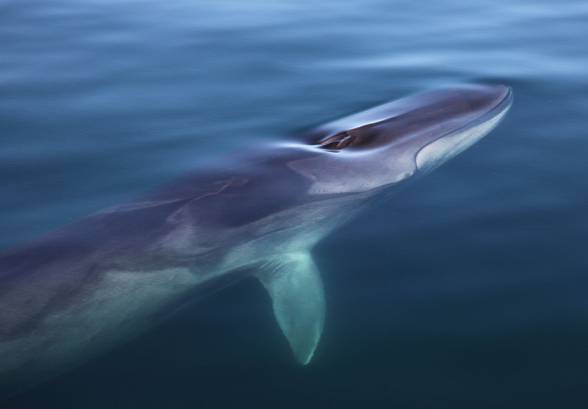
Areas of occurrence
Finbacks, as most whales, are a cosmopolitan species. They can be observed practically in all main oceans of the world. They prefer cool to moderately warm waters, which is why their population in such regions is the largest. Slightly less often they inhabit tropical waters. However they do not appear in the Arctic and Antarctic areas. They like deep waters, but they also inhabit the continental shelf domain.
Fin whales are migrant animals, though the pattern of their relocations is not fully recognized yet. Anyhow we know that they move towards warmer waters in the winter, and stay in colder areas during summer.

Characteristic features
Fin whales is systematized as a baleen whale (Mysticeti parvorder). This name roots in the whale’s upper jaw equipment, which is filled with so called baleen plates instead of teeth. These are keratin plates with hairy fringes arranged in line, essential to the filtering process. Their number ranges from 280 to 480 at each side. They are darkly colored with brighter horizontal streaks.
Fin whale has a slim and streamline body shape. However these are the characteristics of a majority of marine mammals, hence it is easily mistaken for a blue whale, sei whale, or Bryde’s whale. Nevertheless a fin whale’s head is more arrow-like and its dorsal fin is located further to the whale’s tail and grows at a smaller angle than in case of other whales.
Fin whales have a double blowhole. When it exhales vigorously, a tight water ‘fountain’ is formed, reaching 4 to 6 meters of height. Additionally in cold conditions the water vapor in its breath condenses, creating a distinctive cloud.
The most apparent attribute of a fin whale is its unique coloration. Its back and sides are black or dark gray/brownish , while its lower jaw, ventral area and bottom sides of pectoral and dorsal fins are white. However its head has a completely asymmetrical coloration – the right side is usually significantly darker than left, which is almost white. The back of the head may be ornamented with light-grey V-shaped patterns.
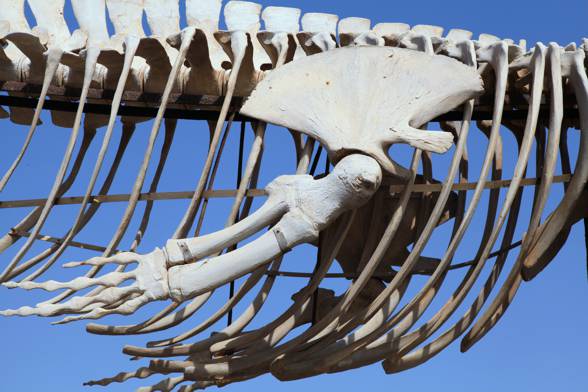
Diet
In spite of being one of the world’s largest animals, fin whales eats mainly plankton, small fish, squids and crustaceans.
Fin whale feeds swimming with its jaws wide open, sweeping in huge amounts of water with fish and plankton. Folds on its throat boost its mouth capacity. In case of exceptionally big whales these folds (sometimes even 100 of them) go all the way to the animal’s navel.
When its mouth is already full, finback closes its jaws, pushes the water out with its tongue, while all food remains inside, stopping at the baleen plates and is subsequently licked clean and swallowed.
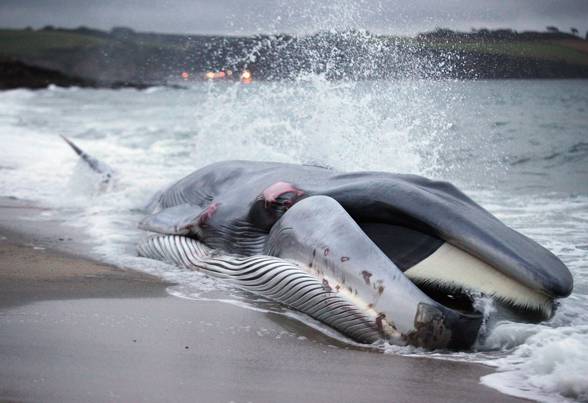
Vocalization – whale’s songs
Sounds emitted by fin whales are one of the lowest in the animal kingdom. They may be generated only by males, each sound lasting from 1 to 2 seconds. They probably have a substantial meaning in the mating process.
Breeding and adolescence
Fin whale’s pregnancy lasts about 11 months. Normally one baby whale is born in the tropical or subtropical climate during winter. A newborn fin whale is from 6 to 6.5 meters (20-21ft) long. When the babies grow up a bit, most finbacks return to the colder waters, which hold more food. When there, they resupply and restore their fat tissue. A female gives birth every 2-3 years.
Fin whales are fully sexually developed in the age of 20-25.
Fin whale’s lifespan is up to 94 years, though certain animals reaching 140 years of age were recorded.
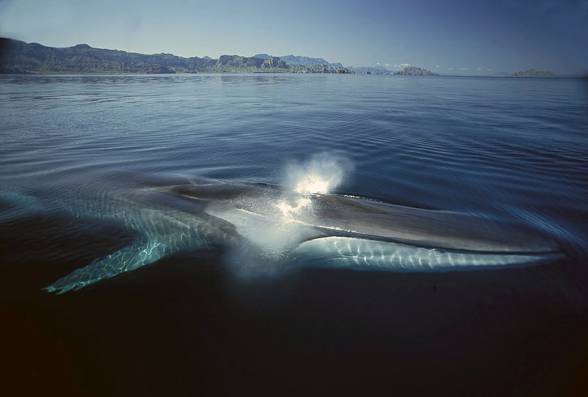
Threats
Fin whale is an endangered species. The main reason for that state of affairs is the human exploitation. As the blue whale population significantly decreased, the fishers’ interest moved towards fin whales, which has become massively hunted for.
Nowadays the main threats for fin whales are: environmental pollution, disappearance of its natural habitats due to excessive human expansion, and extensive noise pollution. The world still holds regions, where fin whales are hunted for commercially.
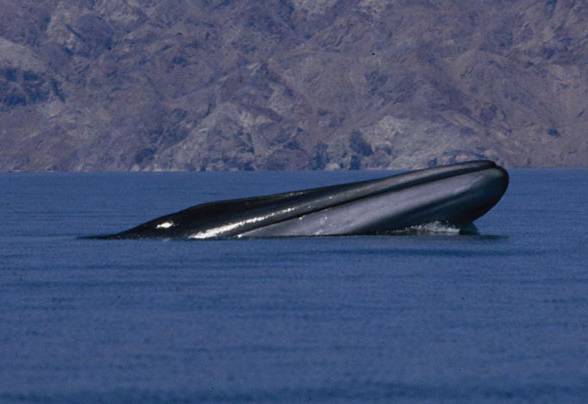
Detailed information / size
Fin whale (Balaenoptera physalus)
The average size of fin whales gives them second rank, right behind blue whales. Yet the largest fin whale’s weight was a bit lower than the largest humpback whale female (unconfirmed).
Fin whales show sexual dimorphism – females are somewhat larger than males. Additionally the size of these animals varies depending on their habitat.
Males living on the southern hemisphere are on average 20.5 meters (67 ft) long, while females mean length is 22 meters (72 ft). The largest whales may even reach 27 meters (record 27.3 m (89.6 ft)).
In case of fin whales inhabiting the northern hemisphere, the males have a mean length of 18.5 meters (61 ft), whereas females: 20 meters (66 ft). Even the largest whales’ length does not exceed 24 meters (79ft).
The weight of the largest finback whales reaches 75 tons at maximum, but the weight of the individual with a length of 27 m was estimated at 120 tons.
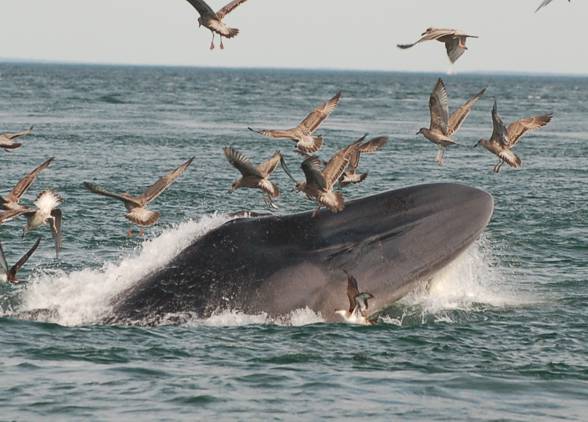
Fin whales – interesting facts
- Fin whales can dive even 470 meters (1540 ft) deep and remain underwater from 10 to 15 minutes.
- Fin whales reach considerable velocities while swimming – up to 37 km/h (23 mph), max recorded speed: 46 km/h (29 mph). Therefore it is one of the fastest cetaceans. The fin whales have the nickname “the greyhounds of the sea”.
- Finbacks usually form groups of 2 to 7 whales, yet they can also lead a solitary life or form larger groups – up to 100 animals.
- The International Whaling Commission’s estimates that at the turn of the XX and XXI century the fin whale population in the North and Central Atlantic combined with Western Greenland counted about 25 – 46 thousand whales. We still lack the data considering other parts of the world.
- In the August of 2007 a fin whale was seen in the Gdańsk Bay (Baltic Sea), which is a rarity, for those animals rather avoid coastal waters.
- In August 2015 a body of an 18-meter (59ft), 23-ton fin whale was caught adrift at the Stegna beach (also Baltic Sea). The whale was transported to the Marine Station on the Hel peninsula. In November 2013 a similar situation occurred with the Northern bottlenose whale.
